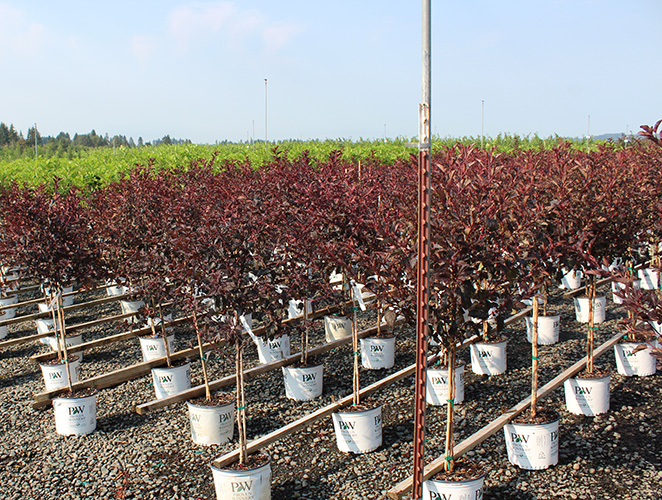Caring for Tree-Form Shrubs
Caring for tree-form shrubs is as easy as caring for the normal kind, though the pruning needs are different.
Above Recipe: Morning Sunshine Below Recipe: Graceful Elegance
How do you make a fabulous flowering shrub even better? Make it a tree-form! Tree-form shrubs, also known as standards, are specially trained to grow with a single “trunk” and a leafy “canopy” instead of their natural multi-stemmed habit. This gives them an extra-dramatic presence in the landscape, though the additional time and work it takes a grower to create this unique form make them more expensive than their conventional counterparts. Caring for tree-form shrubs is as easy as caring for the normal kind, though pruning needs are different.
Most shrubs don’t strictly require yearly pruning, but tree-form plants do: the top will grow larger and faster than the trunk and may even obscure it, so keeping the two in scale with each other is important. Start by looking carefully at the whole plant to determine what size canopy looks right with the thickness and height of the trunk. First, cut out any dead branches as close to the main stem as possible, then shorten the rest of the branches. How much you cut off depends on the age and size of your plant, so rely on your eye and judgment. As a general rule, plan to cut the canopy branches back by about half their length, though harder pruning may be required. As long as you leave a minimum of one-third of the top intact, you won’t harm the plant.
When you cut your tree-form shrub is as important as how you cut it. Some species should be pruned in early spring, just as the new growth is beginning to appear on the stems, while others should be pruned after they flower. If you prune your plant at the wrong time, you won’t kill it, but you will eliminate all of the flowers for that year.
Here’s a guide:
Prune in early spring
| Prune after blooming
|
 Never cut into the main trunk of the plant, but if any errant shoots appear along it, they should be removed right away. Aside from pruning, simply giving your plant a 2-3”/5-7.6cm layer of shredded bark mulch and keeping it well-watered (especially during hot, dry weather) is all you need to do give your tree-form plant a long and healthy life.
Never cut into the main trunk of the plant, but if any errant shoots appear along it, they should be removed right away. Aside from pruning, simply giving your plant a 2-3”/5-7.6cm layer of shredded bark mulch and keeping it well-watered (especially during hot, dry weather) is all you need to do give your tree-form plant a long and healthy life.
We’ve also created a video to demonstrate the process.





